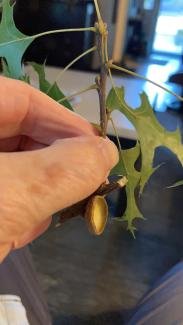
Habitat: Floodplain forests, alluvial swamps, upland depression swamps and ponds.
Wildlife value: Supports a wide variety of Lepidopteran (butterflies and moths). Acorns are eaten by woodpeckers, blue jays, ducks, small mammals, wild turkeys, white-tailed deer, and black bears and edible by people after tannins are leached or boiled out. Plant NOVA Natives lists this species as particularly popular with the non-native honeybees
Notes: A versatile and commonly used tree but a little messy looking since it retains its lower limbs - don't plant too close to a roadway. Short lived, prone to fatal leaf scorch. Needs acidic soil.
Earth Sangha Inventory
Founded in 1997, the Earth Sangha is a nonprofit public charity based in the Washington, DC, region. The Wild Plant Nursery is the most comprehensive source of local-ecotype, native plants in the Washington DC region, and the region’s only facility dedicated exclusively to this type of propagation. “Local-ecotype” plants are propagated from local, wild, naturally-occurring populations and are well-adapted to local conditions and for wildlife species that depend on the local forms, such as pollinators. Inventory is updated on a weekly basis so number may not be accurate.
| Pots Available | Plugs Available | Location | Notes | ||
|---|---|---|---|---|---|
| 99 | 0 | Row 4 | View My Wishlist |

